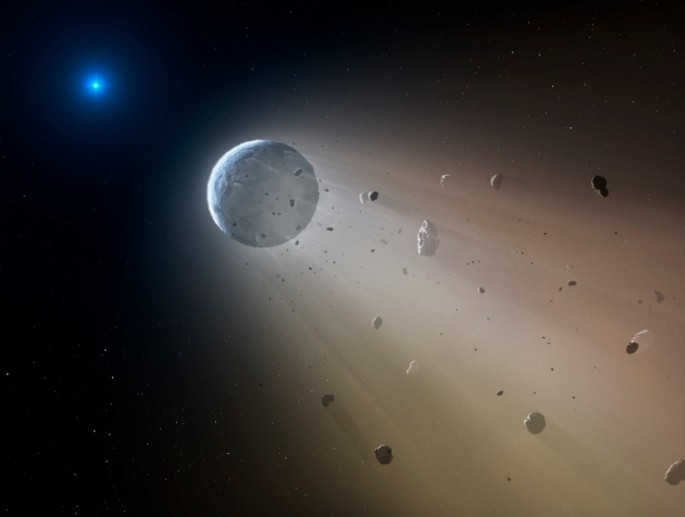Astronomers have captured for the first time ever, how a solar system gets destroyed by a "death star" that can predict Earth's inevitable, grim fate.
These images were taken by NASA's Kepler 2 Space Telescope, where rocky remnants of an alien world that was violently crushed and torn apart, are now spiralling and spinning around this dead star known as a white dwarf, located in the constellation Virgo some 570 light years away from Earth.
Scientists observed these floating chunks of space rock and debris from a planet shredded into bits, enshrouding this white dwarf, rotating around the dead star every 4.5 hours to five hours. The broken up pieces of the destroyed planet are at a distance 520,000 miles from the white dwarf which is almost twice the distance of the moon from Earth.
According to Andrew Vanderburg of the Harvard-Smithsonian Center for Astrophysics, this is an unprecedented event that no human has ever witnessed before. We are now watching a solar system being destroyed.
Stars similar to our sun burn bright from energy derived from nuclear reactions that turn hydrogen into helium. However, when this hydrogen disappears, stars burn the remaining heavier elements like carbon and oxygen where they expand. This process causes the dying star to shed its remaining outer layers, leaving behind an Earth sized core called a white dwarf.
The team behind this mission spotted this cosmic disaster via the Kepler 2 mission where its main goal is to detect new planets through its "dimming" light during the planet's transit around their host stars.
In this new study however, scientists examined this white dwarf known as WD1145+017 where the Kepler 2 telescope detected a 40 percent drop in light for every 4.5 hours from the star, revealing rocky remnants moving around its face.
These Kepler observations of this white dwarf devouring and destroying a planet is also observed by other ground based telescopes such as the MEarth-South telescope in Chile, the Keck Observatory in Hawaii and the Whipple Observatory in Massachusetts. All telescopes confirmed that there are several broken rock remnants that orbit around this dead star.
The results of this new study are the first ever evidence of rocky, disintegrating bodies that orbit around a white dwarf, revealing the source of extreme metal pollution present around white dwarf stars.
To date, astronomers are still figuring out how these rocky remnants gravitate toward the white dwarf stars, where a possibility lies in a destabilization of orbit from a massive planet orbiting a dying star where smaller, rocky planets collided into the star. When the planets get so close to the star, the extreme heat vaporized them and tore them apart.
Vanderburg adds that Earth may face a similar fate in our solar system where the sun will expire and burn out in 5 billion years. As the sun dies, it will also expand and engulf the inner planets, Mercury, Venus and Earth where they could also be shredded into rocky remnants when the sun turns into a white dwarf.
This new study is published in in the journal, Nature.



























